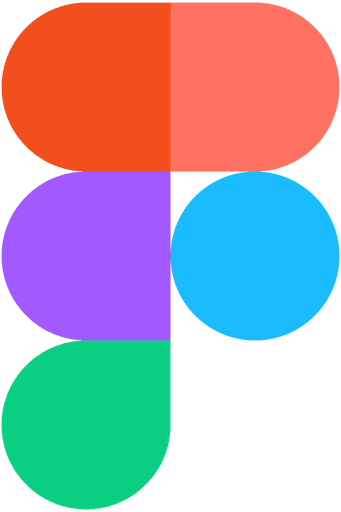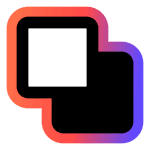A driver-facing app to support self-coaching for long-haul truck drivers
Client
Verzion
Timeline
Aug 2024 - Dec 2024
Industry
Transportation & Fleet Management
Role
UX Designer
UX Researcher
Team
Alexandor Shor
Angele Chen
Jessica Herring
Truck drivers today face increasing stress and dissatisfaction due to the integration of advanced monitoring technologies, such as AI tracking software, Electronic Logging Devices (ELDs), and in-cab cameras, alongside stringent Hours of Service (HoS) regulations. While these tools aim to enhance safety and efficiency, they often create friction in the driver-manager relationship, with drivers perceiving coaching as invasive and overly critical. This dynamic contributes to negative driver sentiment, privacy concerns, and ultimately low driver retention rates.
For this project, we partnered with Verizon to design a driver-centric coaching tool that leverages their technology to provide actionable insights, positive reinforcement, and transparency, fostering a more supportive driver experience.
All of our users loved the ability to clarify incidents, and reported satisfaction with feeling like their input would be heard for erroneous feedback. Additionally, our design effectively delivers coaching in a non-intrusive format. Additionally, in the future, it would be useful to further emphasize how our solution highlights improvement in driving. That being said, the comprehensive and customizable nature of the dashboard was well appreciated by our users, who expressed enthusiasm for the ability to take their coaching into their own hands.

Azuga

LYTX

netradyne

peoplenet

motive

samsara

nauto
With the findings, personas, and empathy maps, we've outlined the following user needs and design implications
Users need to understand the metrics they're coached on, so the system needs to be transparent in how it measures drivers
Users need to feel like the system is pointing out accurate errors, or exonerate themselves in case of system fault, so the system should be reliable but give users the ability to challenge erroneous feedback
Users should feel like the system is working for them rather than them working for the system, so the system should reward good driving and score as a metric of growth
Users need to remain undistracted on the road, so the system should provide updates non-intrusively to balance safe driving and effective coaching
We started off with employing diverse brainstorming techniques such as Worst Possible Idea, SCAMPER, and traditional brainstorming. These sessions led to three key initial concepts:
Incentive Wallet: A feature rewarding drivers for safe driving behaviors.
Leaderboard Gamification: A system promoting friendly competition among drivers to encourage performance improvements.
Post-Shift Report: A detailed summary offering actionable insights into driving patterns and areas for growth.
To validate and refine our ideas:
We conducted semi-structured interviews with the client, Verizon Connect, gathering feedback over three focused sessions.
A survey was distributed to truck drivers and Verizon Connect team members, featuring detailed descriptions of each concept and targeted questions to assess usability.
Unstructured interviews with second-year participants provided additional insights into usability and design improvements.
This part of our prototype is a dashboard that shows drivers important information about their driving metrics. Included is information such as the safety score, which quantifies how safe a driver is driving based on various metrics collected from their vehicle, as well as a section dedicated to the specific metrics they want to display. When clicking into their safety score, the driver is able to see their safety score growth overtime and how their score is being affected by specific metrics and driving habits. Drivers can also click into specific metrics to see their growth overtime for those specific metrics and can also view coaching tips on how they can improve that particular driving skill.
The purpose of this feature is to give drivers the ability to see specific metrics they want to focus on. When designing this section, we wanted to make the process of adding and removing metrics to be quick and intuitive. To add a metric, drivers press the edit button on the left top corner of the metrics section. They then will have a choice to either add or remove metrics. If the user decides to add a metric, a modal will appear that shows them suggested metrics, metrics the system recognizes they can improve in, as well as all the different metrics they can possibly track. The metric they chose will appear on their dashboard, and they can track their improvement in that driving skill.
The cycle report is a weekly compilation of the driving habits and incidents of a truck driver, including time and miles driven as well as notable highlights. Long-haul drivers track their driving for the week by using Hours of Service-specifically Cycle which is a 60-hour timer equivalent to the total amount of time a driver can spend on shift during their work week. Easily evaluating this in one spot is relevant to understand how much more driving in the week the driver is expected to perform. On this page, drivers can see how many hours they have left in their weekly driving cycle and can swipe through areas where they exceeded in their driving during the week.
To refine our designs and ensure usability, we conducted two key evaluation methods:
User Testing:
Conducted 4 semi-structured interviews with truck drivers to gather insights on the prototype’s features, such as the dashboard, post-shift report, and leaderboard gamification.
Expert Evaluation:
Collaborated with 3 designers from Verizon Connect to perform heuristic evaluations based on Nielsen’s 10 Usability Heuristics.
Focused on identifying usability issues and ensuring alignment with Verizon Connect’s design standards.
To refine our designs and ensure usability, we conducted two key evaluation methods:
User Testing:
Conducted 4 semi-structured interviews with truck drivers to gather insights on the prototype’s features, such as the dashboard, post-shift report, and leaderboard gamification.
Expert Evaluation:
Collaborated with 3 designers from Verizon Connect to perform heuristic evaluations based on Nielsen’s 10 Usability Heuristics.
Focused on identifying usability issues and ensuring alignment with Verizon Connect’s design standards.
To refine our design, we plan to:
Strengthen the ‘highlights’ feature to make key driving moments more impactful.
Address usability and accessibility issues identified during the evaluation and validation stage.
Expand the safety score functionality by incorporating a broader range of coaching tips tailored to diverse driving behaviors.
Enhance the daily reports to increase utility and accessibility for drivers, ensuring it integrates seamlessly into their routines.
Lessons Learned
The importance of clear team coordination and task distribution.
How to conduct effective and insightful research methods.
Challenges Experienced
Difficulty finding interview participants that aligned closely with our target user group.
Coordinating across different feature functionalities posed challenges.
What Could’ve Been Different
Establishing a clear information architecture earlier to streamline prototyping.
Conducting more robust surveys to deepen user insights.
Allocating more focus on fleshing out key features during ideation.
What Went Well
Outstanding team collaboration where weaknesses were offset by others’ strengths.
Consistently effective communication with the client.
Strongly positive reactions from drivers, validating our design direction.































